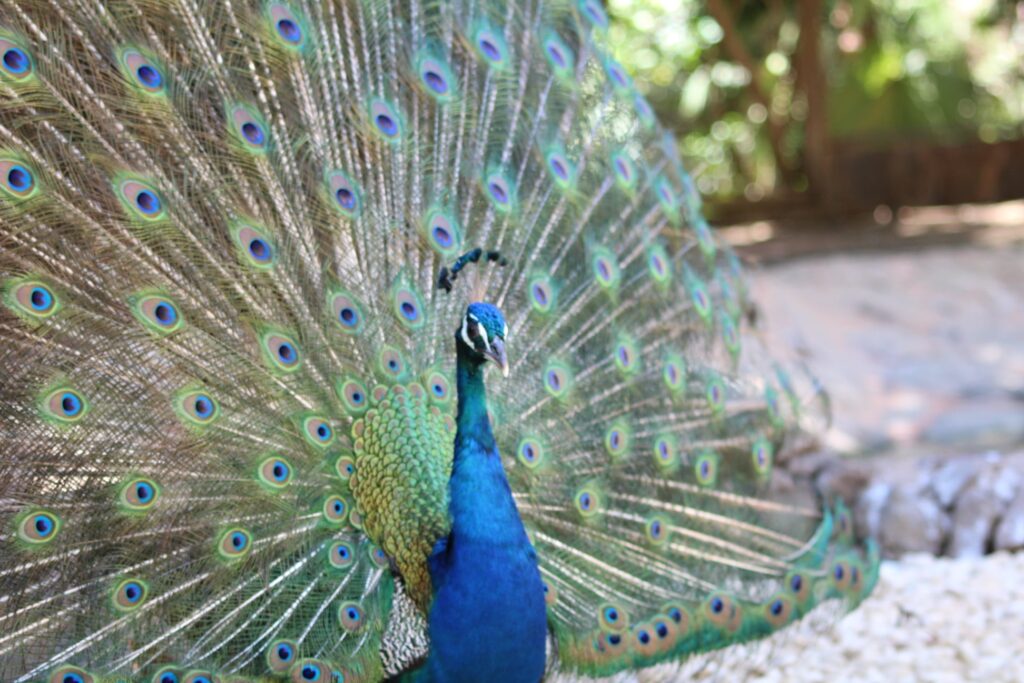INDIAN PEAFOWL
Pavo cristatus

LENGTH

1,1 m
WEIGHT

6 kg
LIFESPAN

15 years
The Indian peafowl is a species of galliform bird that is well known and admired for its impressive plumage. Male peafowl are referred to as peacocks, and female peafowl are referred as peahens, although both sexes are often called as a peacock.
General characteristics
It is very easy to differentiate a male peafowl from a female. One of the most notable and well-known differences is that males have a long tail with showy feathers that characterizes them so much when they open their tail like a fan. The neck and the front of the males are iridescent cobalt blue while the back is made up of green and black scale-like feathers with bronze and copper reflections.
The females, on the contrary, have a plumage of more discreet tones. They have a white face, green neck and dark brown chest with green highlights, which ends up being white on the lower part of the body. The tail is also dark brown.
Males weigh 4-6kg and have a length of about 110cm between beak and tail, but can grow to more than two meters if the length of the long tail feathers is added. Females are relatively smaller, with a length of about 95cm and a maximum weight of 4kg.
Both genders have a fan-shaped crest on the head which is made of feathers with bare black shafts and tipped with bluish-green webbing.
Feeding
They feed mainly on seeds, fruits, plants, insects, frogs and other small reptiles.
Behaviour
Peacocks are land birds. They make their nests on the ground by digging a shallow hole that is covered with branches or leaves.
Because of their large size and long feathers, they cannot fly as such, but they can make small flights to perch on tree branches, where they rest at night, and to flee from predators. They have highly developed eyesight and hearing, which allows them to react quickly to any unexpected event.
The sound they emit is basically a squawk that can be mistaken for a cat meowing. They can also emit quite low trumpeting sounds.
Reproduction
Peacocks are polygamous. Each male may have up to 5 females separated in different areas.
During the breeding period, which is usually in spring, the male displays his tail vertically to court and attract females. It is said that they choose their mates based on the size, color and quality of male´s tails.
Females move away from the group to devote themselves to incubation and breeding and lay their eggs in a hidden place among the vegetation, in the empty holes of a tree trunk or even in the abandoned nests of other birds. They usually lay between three and six eggs that take approximately one month to complete the incubation process.
At first, the chicks hide under the female’s plumage, but after 14 days they begin to scamper and climb on their own.
Threats
Because of their plumage, peacocks have now become a largely domesticated species in zoos around the world. But they can still be found in some areas of their origin in relative abundance.
Distribution
In the wild, they can be found in India and on the island of Sri Lanka. They usually inhabit both wet and dry forests, but have been adapting to live close to settlements and areas under cultivation.

Did you know?
Peafowl is the national bird of India.
They can be irritable and they do not get along well with other domestic birds.
They are sensitive to excessive humidity and low temperatures where they can contract diseases.
Conservation status
